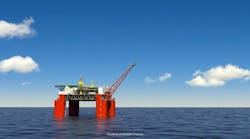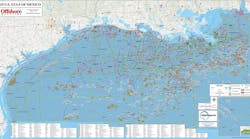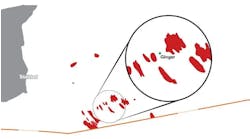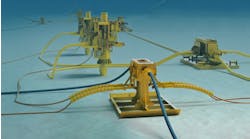Grupo Carso, Pemex evaluate ‘complicated’ Lakach deepwater gas project
Mexican billionaire investor Carlos Slim has said that his team is reevaluating a deal inked with state oil company Pemex to develop Mexico’s first deepwater natural gas field, a project long plagued by problems over its commercial viability.
As reported by Reuters, representatives of Slim’s Grupo Carso and Pemex have been discussing changes to the deal to make the Lakach project profitable, despite lower forecast gas prices.
“It’s a complicated project that needs to be tackled by great technicians,” Slim said during a press conference in Mexico City, adding that the depth at which the resource was buried in the Gulf of Mexico made it more difficult.
“It’ll depend on what is being built,” he said when asked repeatedly whether he was still interested in the field.
The Lakach gas field is located some 70 km offshore Veracruz in southeastern Mexico, in water depths ranging from 900 to 1,200 m.
Pemex has already twice abandoned the Lakach project due to prohibitive development costs. Slim also reiterated the need for more investment in infrastructure and that Mexico was importing the vast majority of its gas from the United States.
Reuters reported that Grupo Carso wanted to add two nearby fields with similar expected resources, Piklis and Kunah, to increase the potential profitability of the venture, and was even contemplating putting the project on hold.
In recent years, Slim has been increasing his investments in the energy sector, with stakes in shallow-water fields Zama, Ichalkil and Pokoch. Last year, his team met with Pemex officials to discuss Lakach.
Located some 90 km (56 miles) from the Gulf port of Veracruz, Lakach holds an estimated 900 Bcf of gas. Pressure is low at the existing well there, making production a challenge. It needed a lot more investment, sources said, and was made more complicated by low natural gas prices.
Pemex first discovered Lakach in 2007. It is one of the largest non-associated gas fields in the Gulf of Mexico, with original gas in place of 1.1 Tcf. Adding the nearby undeveloped fields Kunah and Piklis, the area’s total resource potential is 3.3 Tcf.







